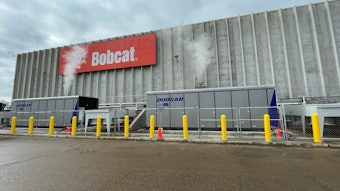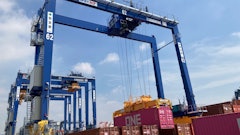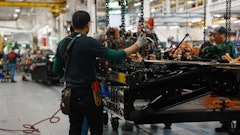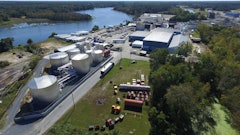
On January 11, 2024, the Biden administration announced that it was earmarking $623 million in grants to fund the buildout of EV charging stations nationwide, all to reach its goal of 500,000 new charging stations by 2030. Since President Biden took office, EV sales have skyrocketed, exceeding 10 million vehicles sold in 2022 alone. However, with this exponential growth has come some growing pains, namely with unavailable or unreliable EV charging stations.
As the federal government’s interest in growing the EV market has grown, the need for an expanded and more supported EV charging station infrastructure has become apparent. With the ambitious initiatives put forth by the Biden administration, all eyes are on the current EV charging network to see where the problems lie and what solutions can be brought to the table.
As any EV driver could tell you, there was a time when driving an EV meant harboring a certain level of “range anxiety.” Since 2013, when the average EV battery range was around 136 miles, their range has greatly improved. The 2024 Tesla Model S, for example, can go up to 405 miles on a full battery charge. Now, with reliability issues of the EV charging network, “range anxiety” has shifted to “charging anxiety” with EV drivers concerned that when they do need a charge, the charging station will either be unavailable or inoperable.
Facing these challenges has been a centerpiece of the federal plan to encourage EV adoption nationwide. The significance of improving and sustaining the EV charging network cannot be overlooked if current and future administrations hope to reach lofty EV adoption goals.
The nationwide charging station issue
The unreliability of the current EV charging station network is likely the most significant hurdle in the way of widespread EV adoption. The issues affecting the network vary and will require a multifaceted and strategic plan to solve. Some of the largest concerns of EV drivers and proponents of EV adoption concerning the charging network include:
- Lack of availability: While some states such as California have vast amounts of public charging stations available, other states like North Dakota have only a little over 200 available statewide, making the prospect of broader EV adoption in the states with few charging stations less likely. It is this sporadic availability that has prompted the Biden Administration to pledge to build 500,000 new stations nationwide by 2030.
- Unreliability: The unreliability of the existing EV network is well-documented, with one study finding that upwards of 20% of all current charging network infrastructure is inoperable at any given time. With the amount of new EV drivers hitting the open road every year, a 20% inoperability percentage is untenable. Although the National Electric Vehicle Infrastructure (NEVI) program has approached this issue with funding for a large-scale deployment of EV charging stations nationwide, their goal of a 97% operational uptime for these charging stations seems out of reach under the current support approach. There simply are not enough trained and certified, EV-specific technicians available to support a 97% uptime aspiration.
- Lack of support: The lack of technicians specifically trained in supporting the complex needs of the EV charging infrastructure presents a significant issue for the network’s planned expansion across the US. To resolve this, there must be educational outreach initiatives to electricians, IT engineers, and automotive technicians to imbue them with the necessary knowledge and skills to make widespread and reliable EV charging infrastructure a reality. Additionally, a comprehensive database of these skilled and credentialed professionals must be created so that those in charge of building and maintaining new EV charging stations know where to turn when they require maintenance.
The federal push for clean energy and job creation
The initiatives brought forth to fund and support new EV charging stations are part of the larger push for a greener future for the United States. Wider EV adoption is not only a critical component of the country’s transition to clean energy but also a cornerstone of the Biden Administration’s campaign that has remained a core focus of its time in office.
For instance, the Bipartisan Infrastructure Law has set aside $2.5 billion for the Charging and Fueling Discretionary Grant Program to provide funding for strategic EV charging infrastructure plans through two distinct avenues. The first, Corridor Charging, will provide EV or alternative fueling infrastructure along designated alternative fuel corridors. The second, Community Charging, seeks to install needed EV charging and alternative fuel infrastructure near public roads, schools, parks, and public parking spaces while also targeting rural areas that have, until now, been deemed “charging deserts.”
The current administration is aware that for the United States to be a leader in the EV revolution, it will need to have a keen eye tuned to the charging infrastructure. The federal government is also aware that by investing in clean energy initiatives, a robust EV charging infrastructure, and EV adoption, they are helping to build economic growth and a new job market.
Supporting EV adoption and the bolstering of the EV charging infrastructure creates ample opportunities in several job sectors, including engineering, construction, IT, cybersecurity, and networking. Plans to expand the infrastructure also aim to help unlock new opportunities for the manufacturing sector, as new parts, electrical components, and skilled installers will be required to meet the administration’s goals. Moreover, a greater number of ancillary jobs and entrepreneurial ventures will also be necessary to support an expanded EV charging infrastructure, from those who create new EV-adjacent software programs to fleet management companies.
The work that the federal government and EV supporters have conducted to improve the availability and reliability of EV charging stations nationwide represents the steps necessary toward advancing the overall adoption of EVs globally. As US Transportation Secretary Pete Buttigieg explained, “America led the arrival of the automotive era, and now we have a chance to lead the world in the EV revolution—securing jobs, savings, and benefits for Americans in the process.”
By investing in the expansion and support of the EV charging station infrastructure, the nation is not only addressing the primary barriers to widespread EV adoption, including “charging anxiety” and accessibility, but is also stimulating needed job growth.
Furthermore, the broader environmental and societal benefits of a strong EV charging station infrastructure cannot be overstated, as increased use of EVs means less dependence on fossil fuels nationwide, the mitigation of air pollution, and lower greenhouse gas emissions. The plans put in place by the Biden Administration have put the nation on track to get as close as possible to net zero emissions by 2050. Realizing these goals will require a collaborative effort by government officials, manufacturers, innovators, community leaders, and skilled workers, as well as sustained funding efforts and the continued engagement of drivers to keep momentum going.
We stand on the edge of radical change in the United States. Through bold and decisive leadership, we have the opportunity to band together as a nation, support the EV charging station network build-out, and stand behind rampant EV adoption. Just as the introduction of the automobile changed the way we live at the turn of the 20th century, the EV revolution has the potential to change our future, offering efficient transportation and the promise of a cleaner tomorrow.


























